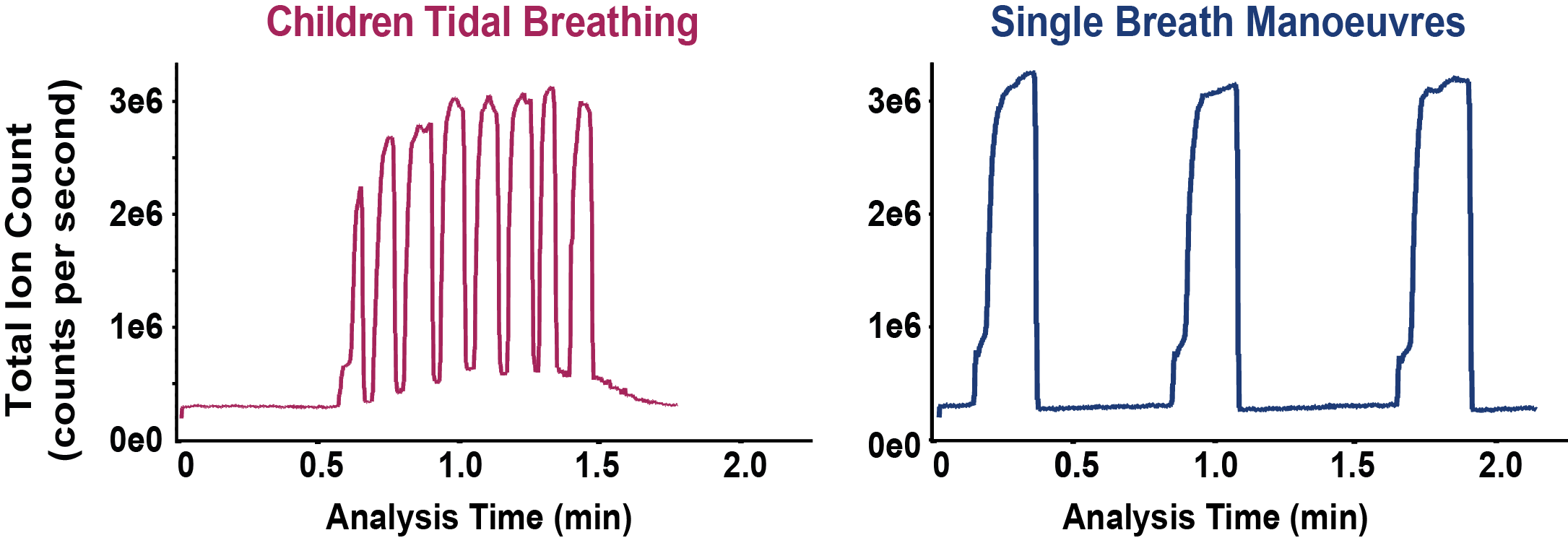Feasibility of breath exhalomics studies with infants and young children for early detection of cystic fibrosis inflammation and infection
Objectives: Early and often subclinical pulmonary infection and pronounced neutrophilic inflammation are major contributors to CF-related morbidity. There is a causal relationship between high airway neutrophil elastase activity and the development of bronchiectasis. Early detection of disease and disease-associated complications is crucial for implementing timely therapeutic measures to reduce disease burden and improve prognosis. Secondary Electrospray Ionisation Mass Spectrometry (SESI-MS) is an extremely efficient method for ionizing compounds in exhaled breath allowing extending the number of compounds that can be detected in exhaled breath.
Methods: We developed a sampling device which can be used with non-cooperative children with tidal breathing and facemask. The device was optimized for real-time, sensitive analysis by introducing a temperature, humidity and flow controlled air supply. A feasibility study was done with 20 children (age range 3-12y), 9 with stable CF and 11 healthy controls. All children performed 6 measurements with tidal breathing and facemask (TBFM) and single breath with mouthpiece (SBMP).

Results: The success rate was 100% for TBFM but SBMP analysis was not feasible for 3 children of age 3y, 4y and 6y. The average m/z features per measurement in positive mode were 713 for SBMP and 702 (-2%, SD11%) for TBFM for molecules detected in the range of m/z = 50 - 320. Data analysis is on-going with a set of 28 breath biomarkers (amino acids, fatty acids and aldehydes) which we identified during previous exhalomics studies with adults. Non-targeted screening for statistical significantly different features (between groups) has started and will be followed by compound identification based on high-performance liquid chromatography (UHPLC-HRMS/MS) of exhaled breath condensates and pure reference standards. Our preliminary results reveal comparable number of features and intensities between TBFM and SBMP.
Conclusions: Breath exhalomics studies with SESI-MS are feasible in children from 3 years of age. Measurements by TBFM and SBMP resulted in similar number of features and intensities. Therefore, optimized SESI-MS can be applied in young non-cooperative children.